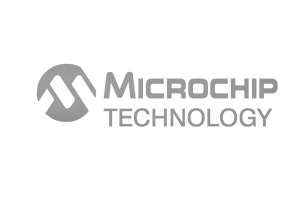ATSAMR34J17BT-I/7JX Overview
The ATSAMR34J17BT-I/7JX is a highly integrated, low-power, sub-GHz transceiver module designed for robust wireless communication in industrial and IoT applications. Combining a high-performance RF front-end with an Arm Cortex-M0+ microcontroller, this module enables efficient data transmission over long distances while maintaining minimal power consumption. Its support for multiple modulation schemes and flexible frequency bands makes it a versatile solution for engineers requiring reliable connectivity in harsh environments. Offered by Fabricante de CI, it is optimized for seamless integration into embedded systems demanding precise wireless control and monitoring.
ATSAMR34J17BT-I/7JX Technical Specifications
| Parámetro | Especificación |
|---|---|
| Operating Frequency Range | 868 MHz to 915 MHz (Sub-GHz ISM bands) |
| Modulation Schemes Supported | FSK, GFSK, OOK, LoRa? |
| Potencia máxima de salida | Up to +14 dBm |
| Receiver Sensitivity | Down to -134 dBm (LoRa mode) |
| Core Processor | Arm Cortex-M0+ 32-bit MCU |
| Tensión de alimentación | 1.8 V to 3.6 V |
| Tipo de envase | QFN 32-pin, 5×5 mm |
| Power Consumption (RX) | 2.7 mA typical |
| Power Consumption (TX at +14 dBm) | up to 60 mA typical |
| Interfaz | SPI, UART, GPIO |
ATSAMR34J17BT-I/7JX Key Features
- Integrated Sub-GHz Transceiver and MCU: Combines an Arm Cortex-M0+ core with a low-power RF transceiver to simplify design and reduce BOM costs.
- Multiple Modulation Support: Enables versatile communication protocols including LoRa and FSK, allowing for flexible deployment scenarios based on range and data rate requirements.
- High Receiver Sensitivity: Achieves down to -134 dBm sensitivity in LoRa mode, enhancing long-distance wireless connectivity and reliable data reception in noisy environments.
- Bajo consumo de energía: Designed for battery-operated applications with an efficient power profile, minimizing current draw in both transmit and receive modes.
- Compact QFN Package: Small 5×5 mm footprint facilitates space-saving designs suitable for embedded industrial and IoT devices.
- Flexible Interface Options: Supports SPI and UART interfaces, enabling straightforward integration with various host processors and systems.
- Amplio rango de tensión de alimentación: Operates reliably over 1.8 V to 3.6 V, accommodating a variety of power sources including batteries and regulated supplies.
ATSAMR34J17BT-I/7JX Advantages vs Typical Alternatives
Compared to typical sub-GHz transceiver modules, this device offers superior receiver sensitivity and integrated MCU functionality, reducing the need for external controllers and enhancing overall system reliability. Its low power consumption supports extended battery life in remote applications. The wide modulation support, including LoRa, provides flexible deployment options for diverse industrial and IoT wireless networks. Additionally, the compact package and robust interface options simplify integration, making it a preferred choice over traditional discrete solutions.
Productos más vendidos
-

TLC555 Timer IC - Temporizador de precisión de Texas Instruments en encapsulado PDIP-8
-

Texas Instruments TL081 Op Amp de entrada JFET de bajo ruido - encapsulado DIP-8
-

Texas Instruments UC3842 Controlador PWM de modo de corriente - Paquete DIP-8
-

Texas Instruments LM2937 Regulador de voltaje encapsulado TO-220 - Lineal de baja caída
Aplicaciones típicas
- Long-range wireless sensor networks requiring low power and high sensitivity for industrial automation and environmental monitoring.
- Smart metering systems where reliable data transmission over sub-GHz bands ensures accurate utility usage reporting.
- Remote control and telemetry devices that benefit from flexible modulation and integrated processing capabilities.
- IoT gateways and edge nodes supporting diverse protocols and extended battery operation in smart city infrastructure.
ATSAMR34J17BT-I/7JX Brand Info
This product is part of a leading semiconductor manufacturer’s portfolio specializing in integrated wireless communication solutions. Designed for demanding industrial and IoT markets, it reflects the brand??s commitment to delivering high-quality, energy-efficient, and compact RF modules. The module leverages advanced RF design and embedded processing technology to support a broad range of wireless applications, emphasizing reliability and ease of use for engineering teams worldwide.
PREGUNTAS FRECUENTES
What are the supported modulation schemes for this transceiver module?
The device supports multiple modulation schemes including Frequency Shift Keying (FSK), Gaussian FSK (GFSK), On-Off Keying (OOK), and LoRa? modulation. This variety allows users to optimize for range, data rate, and power consumption depending on their specific application requirements.
Productos destacados
-

"Compre el comparador de tensión de precisión MAX9312ECJ+ en encapsulado DIP para un rendimiento fiable"
-

QCC-711-1-MQFN48C-TR-03-1 Bluetooth Audio SoC with MQFN48C Package
-

Modelo 0339-671-TLM-E - Paquete TLM-E de alto rendimiento para una funcionalidad mejorada
-

1-1415898-4 Carcasa del conector, cable eléctrico a placa, receptáculo, empaquetado
What is the typical power consumption during transmission and reception?
In receive mode, the current consumption is typically around 2.7 mA, while in transmit mode at maximum output power (+14 dBm), it draws up to 60 mA. These values support efficient battery operation for wireless sensor and control systems.
Which interfaces are available for communication with a host microcontroller?
The module offers standard serial interfaces including SPI and UART, as well as general-purpose input/output (GPIO) pins. This flexibility facilitates easy integration with a wide range of host processors and embedded platforms.
Contacto
What package type and size does this module come in?
The transceiver is housed in a QFN (Quad Flat No-lead) package with 32 pins, measuring 5 mm by 5 mm. This compact form factor supports space-constrained designs typical in embedded and IoT applications.
Can this device operate over different sub-GHz frequency bands?
Yes, it supports operation across the 868 MHz and 915 MHz sub-GHz ISM bands, allowing deployment in various regional wireless standards and enabling global application flexibility.





